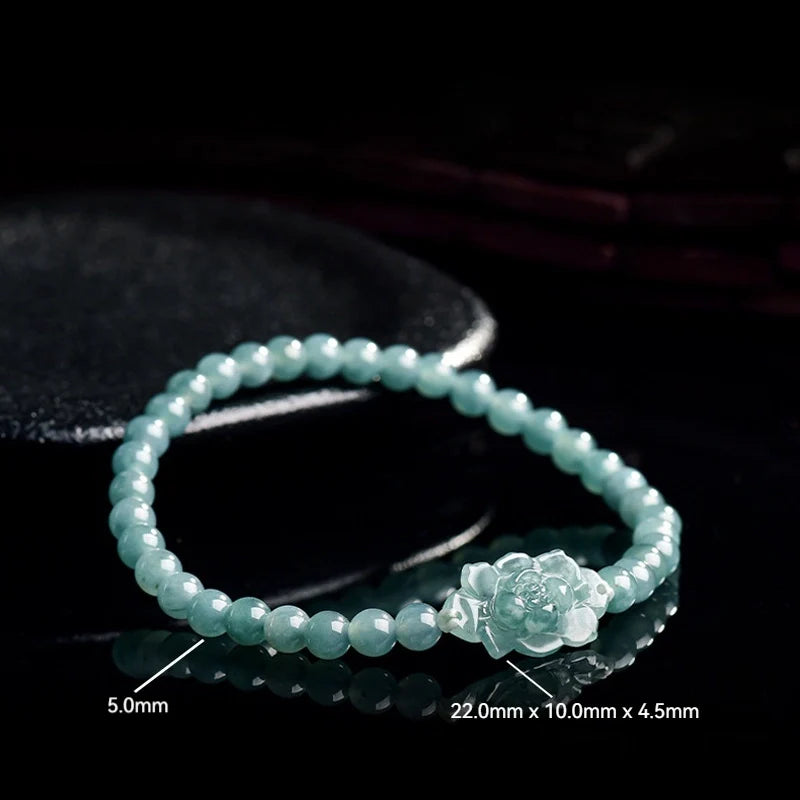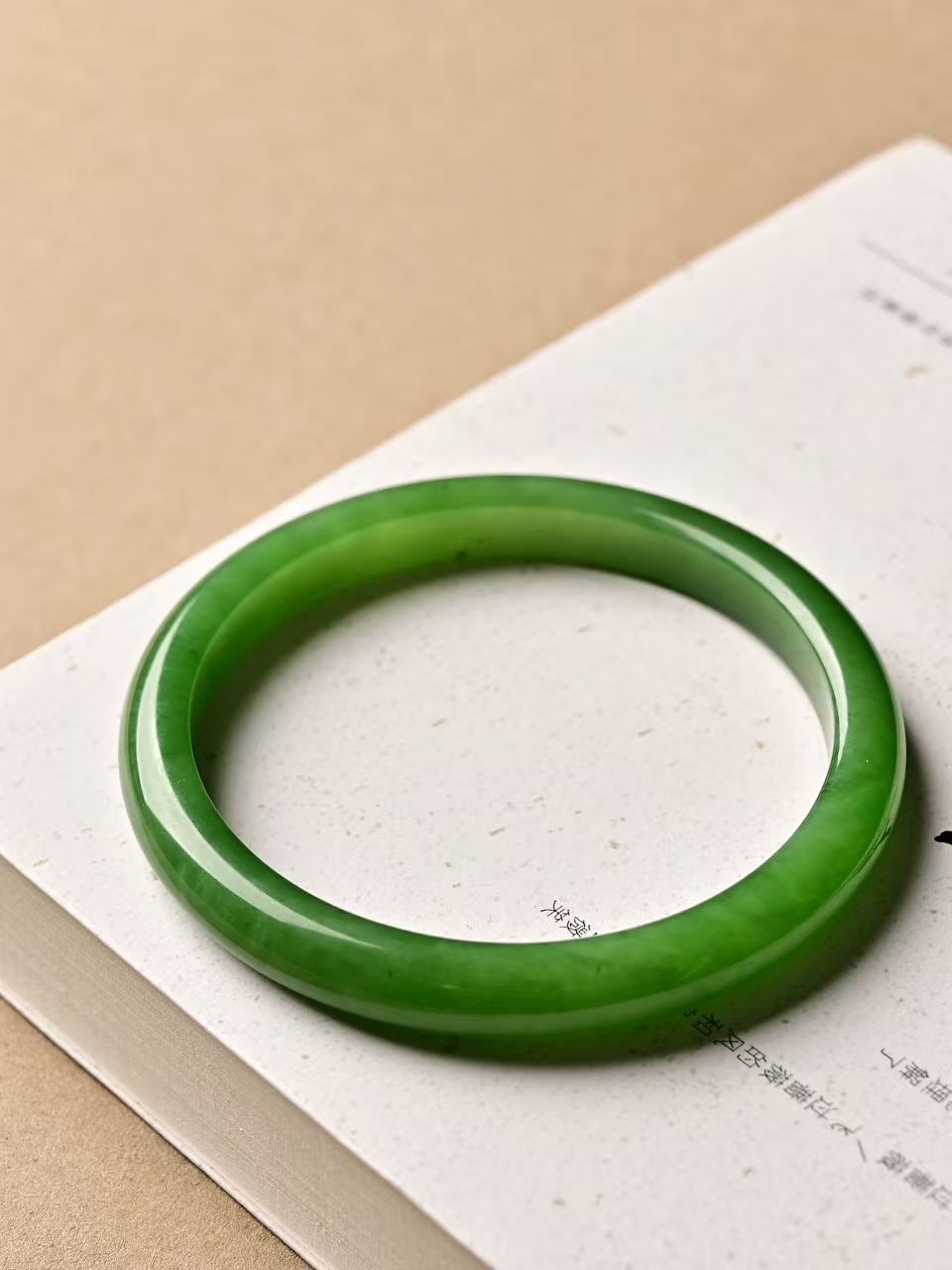How to Select the Perfect Jade Bracelet: A Comprehensive Guide
Choosing a jade bracelet is more than just picking a piece of jewelry—it’s about finding a symbol of elegance, culture, and personal style. With so many options available, it’s essential to know what to look for to ensure you select a high-quality, authentic piece that suits your taste and budget. Here’s a detailed guide to help you navigate the process.
Understanding Jade Types and Qualities
Before diving into the selection process, it’s crucial to understand the different types of jade and their unique characteristics. This knowledge will empower you to make an informed decision.
Recognizing Authentic Jade
Jade comes in two primary varieties: nephrite and jadeite. Each has distinct features that affect its value and appearance.
- Nephrite Jade: Known for its toughness and fibrous structure, nephrite is often found in shades of green, white, and black. It has a waxy luster and is more abundant than jadeite.
- Jadeite Jade: Considered more precious, jadeite comes in a wider range of colors, including vibrant greens, purples, and reds. It has a glassy luster and is highly sought after for its rarity and beauty.
Tips for Identification:
- Texture: Authentic jade should feel smooth and cool to the touch. Avoid pieces with a rough or overly polished surface.
- Sound: Gently tap the jade with your fingernail. High-quality jade produces a clear, ringing sound, while lower-quality stones may sound dull.
- Weight: Jade is denser than most other stones. A genuine jade bracelet should feel heavier than it looks.
Evaluating Color and Clarity
Color and clarity are critical factors in determining the value of a jade bracelet.
- Color Intensity: Look for jade with a rich, even color. The most prized jadeite is "imperial green," a vivid, emerald-like hue. However, other colors like lavender, yellow, and white can also be valuable.
- Color Distribution: Avoid bracelets with uneven color distribution or large patches of discoloration. A consistent color throughout the piece is more desirable.
- Clarity: While jade is not typically transparent, it should have a smooth, even texture without visible inclusions or cracks. Minor inclusions are acceptable, but significant flaws can detract from the bracelet’s beauty and value.
Assessing Craftsmanship and Design
The craftsmanship and design of a jade bracelet play a significant role in its overall appeal and durability.
Examining the Cut and Shape
The cut of a jade bracelet affects how light interacts with the stone and how comfortable it is to wear.
- Round Bracelets: Classic and timeless, round jade bracelets are a popular choice. Ensure the inner diameter fits your wrist comfortably.
- Oval Bracelets: Oval-shaped bracelets can be more ergonomic, especially for those with larger wrists, as they distribute pressure more evenly.
- Custom Cuts: Some artisans offer custom-cut jade bracelets tailored to your wrist size and style preferences. These can be more expensive but offer a unique, personalized touch.
Tips for Selection:
- Smooth Edges: Check that the edges of the bracelet are smoothly polished to prevent irritation or snagging on clothing.
- Symmetry: A well-crafted bracelet should have symmetrical lines and a balanced appearance.
Analyzing the Design Elements
The design of a jade bracelet can range from simple and understated to elaborate and ornate.
- Minimalist Designs: If you prefer a clean, elegant look, opt for a bracelet with minimal carving or embellishments. This allows the natural beauty of the jade to shine through.
- Intricate Carvings: For those who appreciate artistry, look for bracelets with detailed carvings, such as floral motifs, dragons, or other cultural symbols. These pieces often require exceptional skill to create and can be more valuable.
- Mixed Materials: Some jade bracelets incorporate other materials, like gold or silver accents, to add contrast and visual interest. Ensure these materials are of high quality and complement the jade.
Tips for Selection:
- Cohesion: Choose a design that resonates with your personal style and complements your existing jewelry collection.
- Durability: If the bracelet features carvings or additional materials, ensure they are securely attached and won’t easily break or chip.
Verifying Authenticity and Certification
In a market filled with imitations, verifying the authenticity of a jade bracelet is essential to avoid overpaying for a fake.
Seeking Professional Appraisal
If you’re unsure about the authenticity of a jade bracelet, consider having it appraised by a certified gemologist or jewelry expert.
- Credentials: Look for appraisers with recognized certifications, such as those from the Gemological Institute of America (GIA) or the American Gem Society (AGS).
- Process: During an appraisal, the expert will examine the jade’s physical properties, including color, texture, and density, and may use specialized equipment like a refractometer or spectrometer to confirm its identity.
- Report: A reputable appraiser will provide a detailed report outlining their findings, including the type of jade, its quality, and an estimated value.
Checking for Certification
Many high-quality jade bracelets come with certification from independent laboratories or industry organizations.
- Certification Labels: Look for labels or stamps indicating that the jade has been tested and certified by a recognized authority. Common certifications include those from the GIA, AGS, or national gemological associations.
- Online Verification: Some certification bodies offer online databases where you can verify the authenticity of a certificate by entering its unique number.
- Transparency: Reputable sellers should be willing to provide certification information and answer any questions you have about the bracelet’s origin and quality.
Tips for Verification:
- Cross-Reference: If possible, compare the certification details with information from multiple sources to ensure consistency.
- Red Flags: Be wary of sellers who refuse to provide certification or offer vague explanations about the jade’s authenticity.






